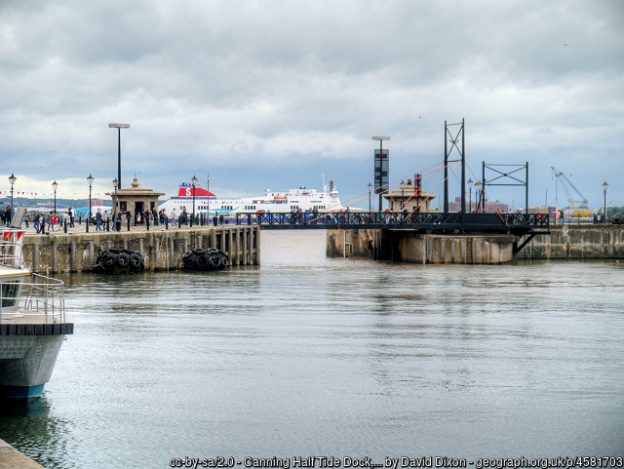[This was also posted last week on the Centre for Law and History blog]
In August 1850, a jury in Liverpool heard the case of Wright v. Holgate. The jurors’ job was to make a decision about the ‘legitimacy’ of a child, Tom Wright. Was this three-year-old the ‘lawful’ offspring of Thomas Wright, butcher and cattle dealer, and his late wife, Susannah, or was he another man’s son, and thus a ‘bastard’ (specifically, an ‘adulterine bastard’)? The question had arisen during a dispute about property of the Holgates, Susannah’s family, who were cattle dealers of some standing in the Halifax area. If Tom was ‘legitimate’, he had a share; if he was a ‘bastard’, he did not. The jury heard a selection of views on the former spouses from acquaintances and neighbours, brought in to comment on whether they had had the opportunity to have sex at the relevant time, so that Thomas might be Tom’s biological father, and on the character of Susannah. She was portrayed, in the somewhat gossipy testimony, as ‘no better than she ought to be’, and given to entertaining a variety of men other than her husband at her house. After only a short discussion, the verdict of the twelve male jurors came back: ‘bastard’.[1]
As far as the law of the time was concerned, that was the end of Tom Wright’s importance, and, since the relevance of ‘bastardy’ in legal and social terms diminished massively over the course of the twentieth century, this case might well raise in the minds of modern legal scholars that cold dismissive phrase: ‘of no more than antiquarian interest’. Even so, I am going to use this post on our newly-launched blog to suggest that there are, in this case, and in this area, some things which are worth the attention of thoughtful legal scholars of the twenty-first century, as well as those of us who are unashamed of our antiquarian tendencies.
‘[B]ound in with the triumphant sea’ [2]
Though the case ended up in a common law court in the port city of Liverpool, much of the action had taken place inland, in Halifax and Rochdale. That being so, my maritime references might seem a bit inappropriate, but there is a justification for getting a bit nautical when considering the law of adulterine bastardy. Accounts of it often mention a particular test for whether or not a husband would be presumed to be the father of the child: had he been ‘within the four seas’ at relevant times for procreation? The phrase was mentioned in the judge’s summing up to the jury in Wright v. Holgate:
‘When a married woman has a child, the presumption is in favour of its legitimacy. Formerly, indeed, the presumption was, that if the husband continued within the four seas, and was alive at the child’s birth, such child could not be a bastard. But now the law allows inquiry…’
Here, we see the splendidly named judge, Sir Cresswell Cresswell, taking a moment to contrast the enlightened times in which he and the jurors were living with what he saw as the less perfect doctrine of former times. He felt it important to tell them that the question as to whether a husband was, or was not, ‘within the four seas’ at relevant points was once something close to being decisive of the legitimacy of a child borne by his wife: if the opportunity of access was shown, using this criterion, no further inquiry as to the probability of there having been sex between the spouses, or the likelihood of somebody other than the husband being the child’s father, would be permitted. As well as the touch of self-satisfaction that things were so very much better in the world of 1850, we may note that there is something of a lack of specificity as to just when ‘formerly’ was. The legal past is an undifferentiated mass, unworthy of closer consideration.
In fact, the law on adulterine bastardy in general, and the place of the ‘four seas’ idea within it, had been far from unchanging over previous centuries. My research in this area has led me to conclude that the question of whether or not the husband was ‘within the four seas’ was not always – perhaps not usually – quite as central as Cresswell’s statement implies. The treatment of the ‘four seas’ phrase, from its first appearances in medieval cases, shows different levels of emphasis, as well as movement between less and more literal understandings, and between geographical and political interpretations of the ‘seas’ and the land they were taken to enclose.
There were always difficulties with delineating the ‘four seas’. Despite Shakespeare’s best efforts to suggest that it was a ‘precious stone set in the silver sea’, England never has been, an ‘isle’ (‘sceptred’ or otherwise). The inconvenient existence of a land border, rather than a sea, between England and Scotland was never quite overcome, there were complications to the west: was Ireland ‘within’ or ‘without’ the western sea, and what of more distant ‘possessions’ of the English crown? The neat phrase ‘within the four seas’ did not make a very sure foundation for a rule about presumed legitimacy, and it was de-emphasised, and weakened in practical importance, from the eighteenth century onwards.
Its day was long over by 1850, yet it continued to hold the imagination of those discussing this area. Sir Cresswell Cresswell was not alone in his reference to ‘the four seas’; they continued to echo in commentary into the twentieth century. This lingering is probably due, in part, to the power of a well-turned phrase on the mind and memory of common lawyers. An attractive image or phrase may draw attemtion to one part of a more complex area of doctrine, at the expense of inconsistent or qualifying factors which are less amenable to neat encapsulation.[3]
That leads me to ask why ‘within the four seas’ was an attractive concept to common lawyers of the ninetennth and twentieth centuries. I would like to suggest that its appeal lay in its fitting in with broader currents in the self-image of the common law, as a robust, independent, intellectual ‘island’, keeping at bay the ‘foreign’ forces of civil law and canon law. The law on bastardy was marshalled as an example of the distinctive nature of common law, holding back the tide of other ideas. An account of another, more prominent, nineteenth century ‘adulterine bastardy’ case was, for example, at pains to point out England’s defiance of attempts to introduce ‘foreign’ rules with regard to legitimation:
‘In England the sturdy independence of our ancestors soon checked the encroachments of the priesthood. Neither the civil nor the canon law ever formed part of the law of the land.’[4]
Perhaps it is not too much of a stretch to imagine that there was mutual reinforcement between the idea of the common law as an intellectual island, aspects of its idiosyncratic and precocious centralised development acting somewhat as ‘a moat defensive to a house, against the envy of less happier lands’, and the idea of the pre-eminence of a test founded upon the assumed existence of England as a discrete and identifiable sea-bordered landmass.
Concluding and continuing thoughts: a father for ‘no man’s son’, dried up doctrine and Doggerland
I started with a young child, his future prospects apparently settled by a brief jury discussion and a stark verdict of ‘bastard’. Another phrase which will be familiar to those who have looked at this area, (or, indeed, at nineteenth century literature), would seem to apply: as a bastard, he was filius nullius – no man’s son. If he really was regarded as not having a father, we might have expected his care to be left to the local workhouse. I am cautiously optimistic, however, that entries I have found on the census for 1851 and 1861 show that Thomas Wright, despite having been found to be a ‘cuckolded’ husband, and not to be the father of Tom, did look after the child, providing a home for him in Rochdale, and setting him on his way to receiving at least some education. As with ‘within the four seas’, so with ‘filius nullius’: too great a focus on a well-turned phrase, taking as literal what was understood to be at least partly metaphorical, could divert us from a more complicated reality.
Like the ‘four seas’ idea itself, much of the law which obtained in the case of Tom Wright has now been swept away, and, if we want to know who is a child’s biological father, then DNA testing can give a virtually conclusive answer. Nevertheless, I think these remnants have much to tell us about lives and thought of the past, about solutions to what seemed to be matters beyond human knowledge, about proof and policy, about how common lawyers of one era thought of and used the law of the even deeper past. Since we know that a vivid maritime image can stay with us, I will end with the one which always comes to my mind when dealing with such material: it is that of Doggerland – an area formerly of considerable human activity, now beneath the sea as a result of climate change. Most of us will never visit it, but it is important to know it is there, both for practical modern purposes, and also for deeper understanding of those who have navigated these spaces before us.
Thank you for your company on this brief voyage.
Gwen Seabourne
August, 2021.
Update 14/4/2022
I was reminded of a particularly egregious example of the ‘England is an island’ delusion the other day – take a bow, eminent Cambridge legal academic, C.S. Kenny …
‘It is not only in geographical position that England is an island. The ” silver streak ” along her coasts is not a more conspicuous barrier, than the line of demarcation which separates her legal polity from that of all the rest of Europe. Her jurisprudence is not the jurisprudence of the Continental nations, for she turned away from those Roman fountains from which they have drunk so deeply.’
- C.S. Kenny, The History of the Law of England as to the effects of Marriage on Property and of the wife’s legal capacity (London, 1879), 7.
A fairly staggering shutting of eyes and mind to the existence of an attached landmass which is neither ‘England’ nor governed by the common law of England, eh?
[1] See, e.g., Times 20th July, p. 7 and 20th August 1850, p. 7, Manchester Guardian 21st August 1850, p.6. Halifax Guardian 24th August 1850, p. 3, 27 July 1850, p. 7; Globe 20th August 1850, p. 4; Evening Mail 22nd July 1850, p. 3. Report: ER 175 503; 3 Car. & K 158.
[2] Shakespeare, Richard II, Act II, Scene 1, John of Gaunt.
[3] See, e.g., Andrew Culley and Michael Salter, ‘Why study metaphors?’, K.C.L.J. 15 (2004), 347-366.
[4] Denis Le Marchant, Report of the Proceedings on the Claim to the Barony of Gardner (London, 1828), xxx.
Images – the watery one is from the port of Liverpool, ft. a dock of the period and some water, which seemed appropriate. The bovine one is a nod and a moo to the trade of the Holgates and Wrights – cattle in the Halifax area).
This material comes from a current project on bastardy, I will be presenting a fuller version as a paper at the Society of Legal Scholars conference in September 2021 (paper all written and recorded in case of emergency – so I did something useful in recent self-isolation!), and some of it will probably feature as part of a chapter I am writing for the ‘Known Unknowns’ project, headed by Dr Andrew Bell and Dr Joanna McCunn

